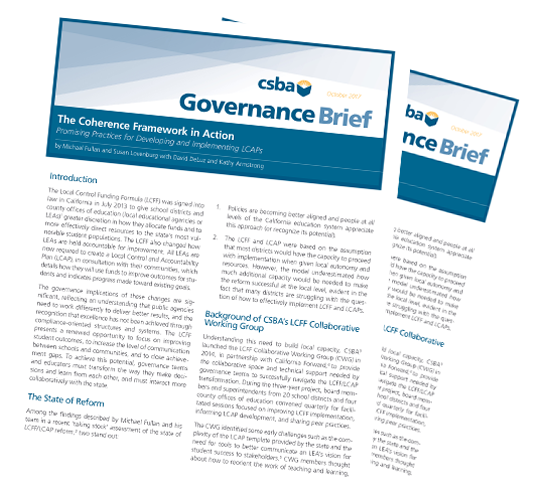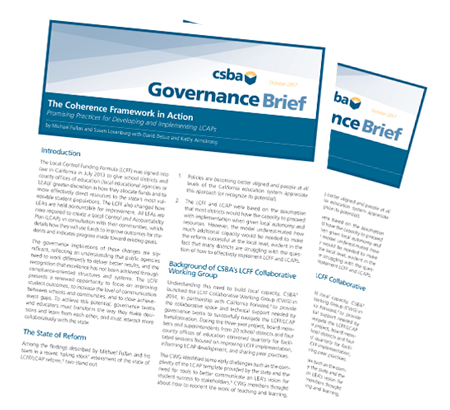

Understand their role as leaders. School governing board members play a vital leadership role in focusing direction based upon the shared values and beliefs of the LEA and community. Specifically, governing boards have the ability to build and support a collaborative approach to continuous improvement and maximize conditions for effective internal accountability. By maximizing their role and fully engaging their responsibilities as education leaders, school board members can “lead by example” and illuminate the way for others who want to transform student outcomes.
Master the Framework. Board members who want to use the framework effectively need to understand how it works. To begin, they need to review our policy brief. Then, they need to read Michael Fullan’s book Coherence and utilize the resources contained in it to begin the process of learning how the Coherence Framework serves to guide learning and focus attention.
Commit to developing leadership at all levels. Board members should make the commitment to invest in leadership development —for themselves and for other key stakeholders — by supporting robust stakeholder engagement and collaboration. Additionally, prioritizing leadership training and professional development (both formal and informal) throughout the district empowers every stakeholder and makes engagement more meaningful and powerful.
To read the brief visit: https://goo.gl/zL3e2A.